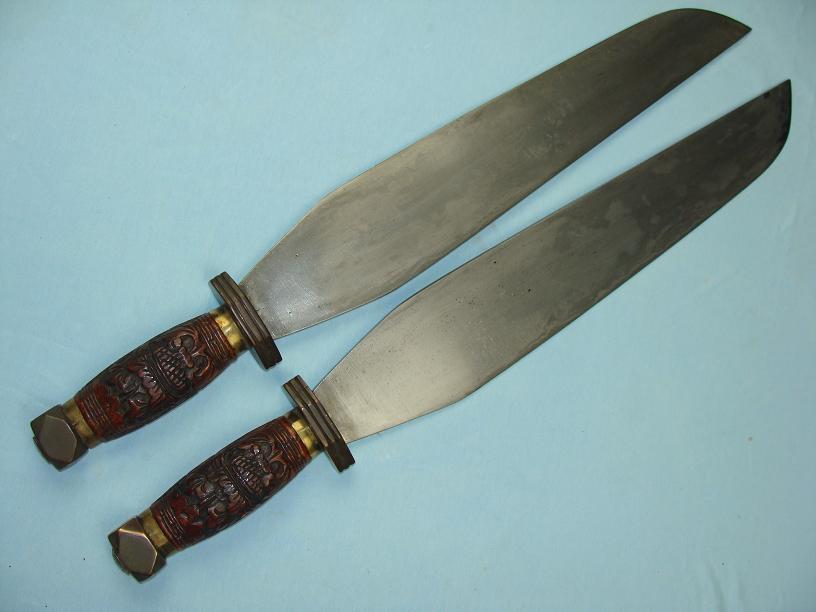
 |
|
|
|
|
#1 |
|
Member
Join Date: Dec 2004
Location: Greensboro, NC
Posts: 1,087
|
I agree with the consensus! I think it is Filipino. The lamination is typical for there, the banding at the block type forte, and I think the quillon is a snake or naga versus a dragon. The grip and ferrule are even quite Filipino. I bet we can find some similar blades in prior posts with similar hilts.
|
|
|

|
|
|
#2 |
|
EAAF Staff
Join Date: Feb 2005
Location: Centerville, Kansas
Posts: 2,196
|
Yes definitely Filipino. A wonderful piece and a great addition to your collection. When you get tired of looking at it you can send it my way.
 If this were listed on a certain online auction it would most likely be described as a Civil War D-guard bowie. If this were listed on a certain online auction it would most likely be described as a Civil War D-guard bowie.Best, Robert |
|
|

|
|
|
#3 |
|
Arms Historian
Join Date: Dec 2004
Location: Route 66
Posts: 10,284
|
I'm curious what Philip said on this, he knows these weapons backward and forward
 Whatever the case, its fascinating to see these hudeidao filtered into other cultures as a number of amazing examples Gav has shown over the years. |
|
|

|
|
|
#4 |
|
Member
Join Date: Mar 2012
Posts: 422
|
Reminds me of this one: http://www.vikingsword.com/vb/showthread.php?t=19754
|
|
|

|
|
|
#5 | |
|
Vikingsword Staff
Join Date: Nov 2004
Posts: 6,339
|
Quote:

|
|
|
|

|
|
|
#6 |
|
EAAF Staff
Join Date: Feb 2005
Location: Centerville, Kansas
Posts: 2,196
|
And here is one I have in my collection with a blade profile and chisel work (though a little more elaborate) that is somewhat similar to Peter's example, but with a medial ridge on both sides of the blade more like Spunjar's example shown in the link. Even though Spunjar's and my own example do not show any signs of Chinese influence they do show some similarity in overall style.
Last edited by Robert; 29th June 2015 at 08:07 AM. |
|
|

|
|
|
#7 |
|
Member
Join Date: Mar 2008
Location: Kingdom of the Netherlands
Posts: 64
|
Thanks for sharing guys, very interesting! That horn handle is beautiful.
Although I'm not entirely convinced mine is filipino, it most certainly shows a strong relationship to these with the chiseled forte and the leaf shaped blade. More Sinified aspects of mine is the straighter shape and the way it builds up width from the forte, giving it more of a Chinese "feel" to it. Compare that effect to, for example, these:  Chiseled engravings on blades, were also quite common (and often floral) in Vietnam. All considering, we might assess it originated somewhere around the South China sea area, sharing shores with South China, the Philippines, and Vietnam. Would you guys agree? |
|
|

|
 |
|
|